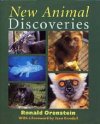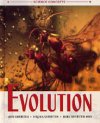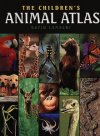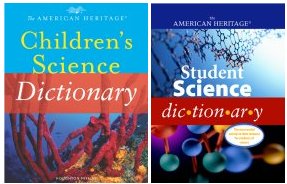Assembling the Tree of Life Additional Information
The Tree of Life Web Project can be found at tolweb.org/tree/ (Tree of Life Web Project).
The Bell Museum of Natural History has a Web site at www.bellmuseum.org(Bell Museum of Natural History). For information about evolution, go to evolution.berkeley.edu (University of California, Berkeley), www.pbs.org/wgbh/evolution (PBS), and www.bbc.co.uk/education/darwin(BBC).
Ramsayer, Kate. 2005. Untangling human origins. Science News for Kids (April 13). Available at http://www.sciencenewsforkids.org/articles/20050413/Note2.asp.
Sohn, Emily. 2005. Fungus hunt. Science News for Kids (July 13). Available at http://www.sciencenewsforkids.org/articles/20050713/Feature1.asp.
Books recommended by SearchIt!Science:
 |
New Animal Discoveries— Ronald Orenstein
Published by Millbrook Press, 2001.
Western scientists have recently discovered new animals in many unexpected places. How do scientists identify new species? What must they do to make their discoveries “official?” And what can we learn about these unusual animals? In this book, you can read about the golden-brown mouse lemur found in Madagascar, the world’s smallest frog found in Africa, a panda with a pouch found in New Guinea, and many more newly discovered species. You’ll also learn clues to discovering some animals that scientists have not yet seen in the wild. We must all work together to protect these animals in their natural habitat. |
 |
Evolution— Virginia Silverstein, Alvin Silverstein, Laura Silverstein Nunn
Published by Twenty-First Century Books/Millbrook Press, 1998.
Where does life come from? The Greek philosopher Plato believed that all the creatures on Earth were reflections of “ideal” forms. Another philosopher, Aristotle, thought that Earth’s creatures could be organized into a hierarchy, with humans crowning the top. Creationism teaches that each species was created exactly as it exists today. But when 18- and 19th-century geologists showed that Earth was constantly changing and reshaping, English naturalist Charles Darwin found support for the idea that living creatures might also be changing, in a process that is called evolution. This book discusses the history of evolution, the evidence for evolution, and how evolution works. It goes beyond Darwin to discuss genetics and reaches back in time to theorize about the first forms of life and the birth of our planet. The book also covers primate evolution, and speculates on our future as an evolving species. |
 |
The Children’s Animal Atlas— David Lambert
Published by Millbrook Press, 1992.
Earth is home to more than 1 million kinds of animals. There are 44,000 species of animals with backbones, 21,000 species of fish, and 8,600 species of birds—and that’s just the beginning. With color photographs, drawings, and maps, this atlas of animal life explains how animals are divided into species, how they evolved, and how they form unique communities. Travel on land and water to various climates, where you can observe the animals that live there. From the giant anteater of the South American grasslands to the orangutans of Southeast Asia’s tropical rain forests to the sidewinder snake of the Siberian desert, the book explains how each creature is adapted to the place where it lives. Attention is paid to specific habitats—such as deserts, marshes, swamps, coral reefs, and the ocean. Migration patterns, changes in body structure over time, and vanishing wildlife species are all described. |
Power Words
cell The most basic part of a living thing, made up of a jelly-like substance called cytoplasm that is enclosed by a thin membrane. The cells of plants and many-celled animals have a nucleus, which contains genes and other structures. The cells of green plants and some algae have chloroplasts, which is where photosynthesis takes place.
A cell is the smallest, most basic unit of life. The smallest living things are made up of just one cell. Large animals and plants are often made up of millions or billions of cells. The cells of plants and animals perform many different tasks, but all are made up of the same basic parts: a protective outer membrane, or wall, cytoplasm, a nucleus that holds the cell’s
DNA, and many tiny structures, called organelles, in which the chemical reactions of the body take place.
DNA Short for deoxyribonucleic acid. The material that makes up the genes and
that is found in all cells. DNA controls the functions of all the cells in the body. DNA in the body consists of two thread-like strands that are linked together in the shape of a double helix.
evolution The gradual change that takes place in living things over long periods of time. New species come into being from earlier life forms through evolution. Evolution is based on the idea of natural selection, which says that only living things that are best able to survive in a particular environment live long enough to reproduce.
species One of the major groups in the classification of living things. A species is below a genus. Only organisms that belong to the same species are able to breed with each other.
Copyright © 2002, 2003 Houghton-Mifflin Company. All rights reserved. Used with permission.
